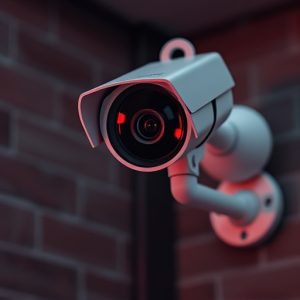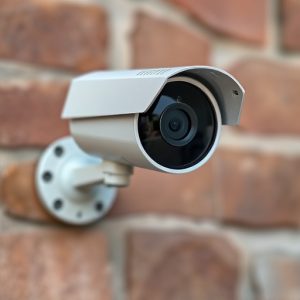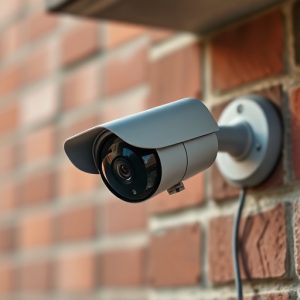Master Fake Security Camera Placement for Optimal Protection
Fake surveillance cameras, positioned strategically per a detailed guide, significantly enhance phys…….
Fake surveillance cameras, positioned strategically per a detailed guide, significantly enhance physical security by deterring intruders through perceived increased surveillance. This involves placing them in high-risk areas like entry points and valuable asset locations, ensuring unobstructed views while blending naturally into the environment to avoid detection. Regular reviews and adjustments maintain their effectiveness as powerful psychological deterrents against crime.
“Enhance your home or business security with our comprehensive Fake Surveillance Camera Positioning Guide. Discover the art of strategic placement for maximum deterrence. This guide delves into the purpose of fake cameras, offering key considerations and optimal position strategies to fortify your defenses. Learn how to navigate common setup mistakes and create an impenetrable layout. Boost your security measures effectively and efficiently with our expert insights on fake camera placement.”
- Understanding the Purpose of Fake Security Cameras
- Key Considerations for Effective Placement Strategy
- Choosing the Optimal Camera Positions
- Avoiding Common Mistakes in Setup and Layout
Understanding the Purpose of Fake Security Cameras
Fake security cameras, also known as decoy or dummy cameras, serve a unique purpose in enhancing physical security. They are designed to mislead potential intruders and deter criminal activity through a perceived increase in surveillance. In essence, these fake cameras act as a crucial component of a comprehensive security strategy, acting as a powerful deterrent without the need for real monitoring.
Understanding the strategic placement of these devices is key to maximizing their effectiveness as part of a Fake Surveillance Camera Positioning Guide. By simulating active surveillance, they can change behavior and make would-be thieves think twice before attempting any illicit actions. Placement should consider high-risk areas, such as entry points, valuable asset locations, and blind spots where regular cameras might not offer complete coverage. This smart approach ensures that even if the cameras are not recording, their mere presence can significantly impact security outcomes.
Key Considerations for Effective Placement Strategy
When developing a fake security camera placement strategy, it’s crucial to consider several key factors for maximum effectiveness. The first step is understanding your target areas and potential risks. Identify high-value assets, entry points, and common areas where unauthorized access could occur. A Fake Surveillance Camera Positioning Guide should start by mapping out these zones, ensuring comprehensive coverage without creating an obvious pattern that could alert would-be intruders.
Additionally, natural placement and camouflage are essential. Mount cameras in plain sight to deter casual vandals or thieves, but position them strategically to avoid becoming visible from certain angles or distances. Incorporate realistic-looking decoys and practice good lighting design to further enhance the illusion. Regularly review and adjust your strategy based on changing circumstances, new risks, or feedback from security professionals, ensuring your fake camera system remains a potent deterrent.
Choosing the Optimal Camera Positions
When creating a fake security camera placement strategy, understanding the optimal camera positions is key to an effective fake surveillance camera positioning guide. The ideal spots are those that offer clear, unobstructed views of targeted areas while maintaining realism. Place cameras strategically above eye level and at angles that mimic genuine installation, ensuring they capture detailed footage without being easily spotted. Consider common entry points, valuable assets, and high-traffic areas as primary targets for placement.
In a fake surveillance camera positioning guide, it’s crucial to blend the cameras into the environment. Mount them on walls or ceilings, behind realistic-looking props, or integrate them seamlessly into existing fixtures. Avoid obvious placements like directly in front of doors or windows, and instead opt for positions that appear natural and unexpected. This approach not only enhances security but also creates a psychological deterrent against potential intruders.
Avoiding Common Mistakes in Setup and Layout
When implementing a fake security camera placement strategy, it’s crucial to avoid common pitfalls that can render your setup ineffective or even comical. One of the biggest mistakes is placing cameras in obvious locations, such as directly above doors or windows, where their presence is readily apparent. Criminals are savvy; they know where to look for vulnerabilities and will quickly spot a fake camera, undermining its deterrent effect. Instead, mount cameras at unexpected angles or disguise them as everyday objects like fire alarms, outdoor lights, or even plants.
Another blunder is neglecting to consider the area’s layout and line of sight. Cameras should be positioned to capture key areas without being obstructed by furniture, curtains, or other objects that could limit their field of view. Additionally, ensure there are no shadows cast by nearby structures or trees during different times of the day, as this can obscure crucial details. A well-thought-out guide like this fake surveillance camera positioning guide will help you navigate these challenges, ensuring your security system appears genuine and comprehensive.
A well-planned fake security camera placement strategy is a powerful tool for enhancing real security measures. By understanding the purpose of these cameras, considering environmental factors, and avoiding common setup mistakes, you can create an effective deterrent and provide peace of mind. This Fake Surveillance Camera Positioning Guide offers essential insights to ensure your property remains safe and secure, both physically and digitally.


